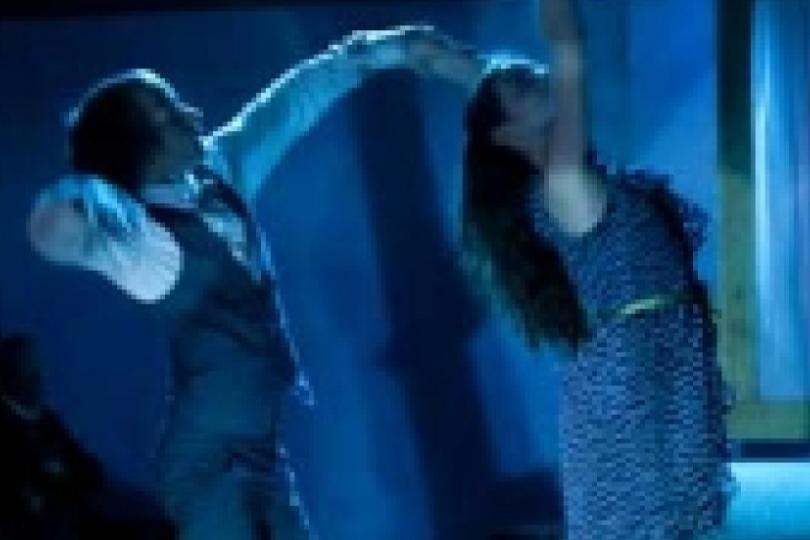How do I judge theater?
My tech theater professor often said, "Every thing you put on stage is a choice. Make sure it helps to tell the story." This is my starting point.
What am I looking at? Unless I am walking into action, I often look at your set, your lights, and I'll listen to your sound. Most theater is telling a story of some kind. So what elements of this story have you decided to highlight with your tech and how have you used them here in this moment?
The big question almost always is "How did you make these choices: deliberately or haphazardly?" I can’t read your mind, but often your choices will reveal the answer.
I'm not a tech-theater person; I mostly direct. Yet I spend a lot of time with designers and technicians because of the value of these story-telling elements. They require careful consideration. It isn't always the make or break thing for me, but it certainly impacts my enjoyment of any piece.
So what you are saying is if I don't have a big set, lots of lights and a robust sound design then my show sucks?
Or maybe you’re saying, if I can't afford to hire a bunch of quality designers then my work is sub-par?
No.
You can have a single chair, silence, and four clip lights for your show. What I hope is that these choices were fully considered and are part and parcel to the story you’re presenting.
When I leave the theater I want to revel in your choice of the single chair. I want to know those four clip lights were exactly what made sense for the climactic moment of the piece. And I want the silence used in a way that made the show more, more you, and more your story.
The more you can do with less, the more impressed I usually am. I think this notion plays to theater's strength—imagination. Like a Zen practice, though, simplicity is challenging. It's easy to over-design. The less tech "stuff" going on the louder each choice speaks; it's an inverse ratio. Less becomes more. So be considerate of these choices.
An example
In March of 2012 Jon Ferguson presented his new work A bun for a door handle. It tells the story of a husband and wife who grow apart over time. They can't find the place where their love was strong, and they rely on routine to get them through the day. A simple thing like playing a game of Battleship becomes a point of conflict for the two of them. During the piece their “better selves” end up taking residence in their home and help the couple find their way. The conclusion of the journey is a moment of self-forgiveness. The final image: the couple dancing together as the lights fade.
It was staged in a furniture store that hadn't quite opened yet. Immediately, I was struck by the openness and exposure of the location. A single table for ticket collection. A fully exposed stage space. Audience sitting opposite each other like at a tennis match. The tech "booth" another table adjacent to the stage. Jon and cast were wandering around greeting people, chatting, and getting ready. These elements were all choices in service to the piece.
The set consisted of a table, a couch with a window suspended in space behind it, and beyond that an amalgamation of natural materials (wood, paper, and paint) simply done as a tree. Up in one of the tree’s branches was a bird's nest. There was a moment where the wife went outside to water plants. Hearing the sounds of the birds (an actor making the sounds behind the audience), she climbs a stepladder, puts a glove on, reaches the gloved hand up into the bird's nest from underneath and sticks her fingers through. The glove is painted in such a way that her fingers now become the little baby birds. An imaginative moment, simply derived. She then pours real water from a watering can over her hand and we move from the imaginative to the comic as a huge gush of water comes out of the can hitting her hand and going right through the bird's nest to the floor. Laughter and acceptance commence.
When showing how the couple came to be in love, Jon used a metaphor of a map with a path to a waterfall. The fact that they couldn't find the right path anymore was a way to dramatize how we get into ruts in a relationship, long for how things were, and need to forge new paths to re-kindle emotions.
Throughout the piece the couple tries to remember the waterfall and how they got to it. To create this memory effect an overhead projector was used. A blue zip lock bag of water was placed on the projection surface. An actor would gently rock the bag and—voilá—on the other side of the stage the “projection” of a moving waterfall covered the wall. Had they gotten a video projector or multiple lights with gobo rotators, it would have been too much. It certainly would have looked more like a real waterfall, but that wasn't the world this work had established.
Lastly, I was moved and impressed by the use of “live” music. The sound tech had a computer, but Jon had also brought a record player and a bunch of vinyl. The tech would mix sounds from his computer with seemingly random choices from the vinyl. Sometimes, Jon (playing the husband) would grab a record; other times the sound tech would. The soundscape was as alive as the actors. Eventually, one of the characters pull the sound technician on stage, the world of the play intermingling with the world of tech.
Failure when trying to do something right.
The need to be open and exposed and how difficult that can be.
What routine does to us.
Life is messy and chaotic and unplanned.
These were all themes of the piece, and time and again the theatrical elements of tech worked in harmony to accentuate these themes.
Not everything worked perfectly. And that's great. I'm not looking for perfection when I see theater. Everyone sees a theater piece through their own eyes. With A Bun for a Door Handle I could tell that everything had been carefully considered.
And that consideration of my experience of your story is what I consider when I judge the quality of a piece of theater.
Damon Runnals
Damon Runnals is the co-founder of Swandive Theatre with Meg DiSciorio, benevolent overlord of Minnesota Playlist, a local D&D Dungeon Master, and father to two amazing girls.





